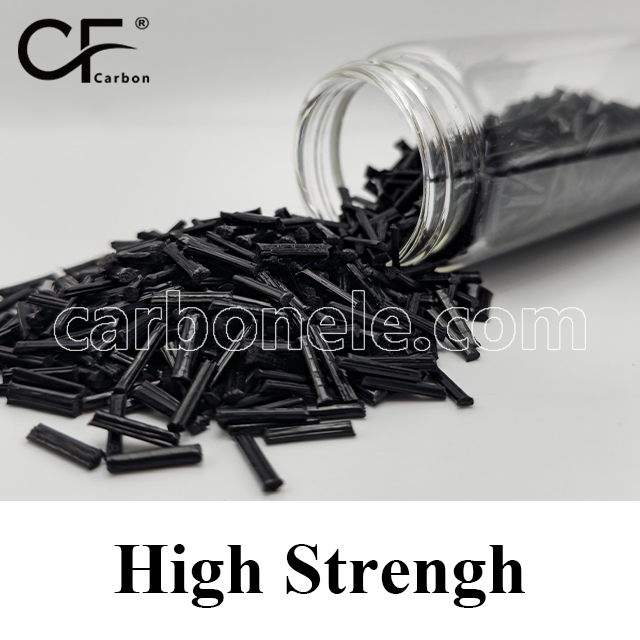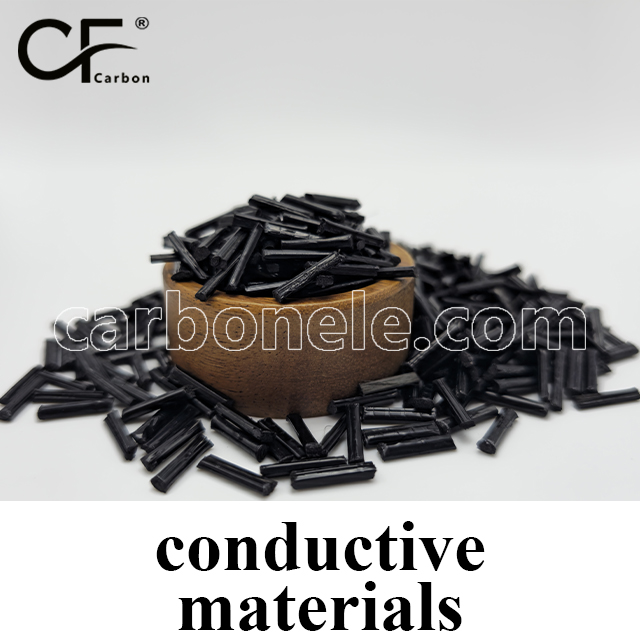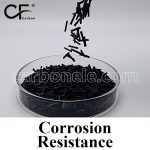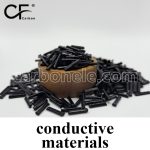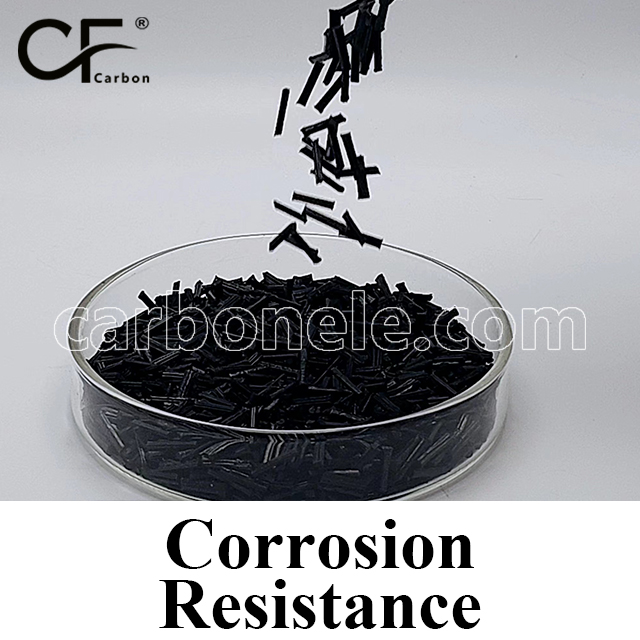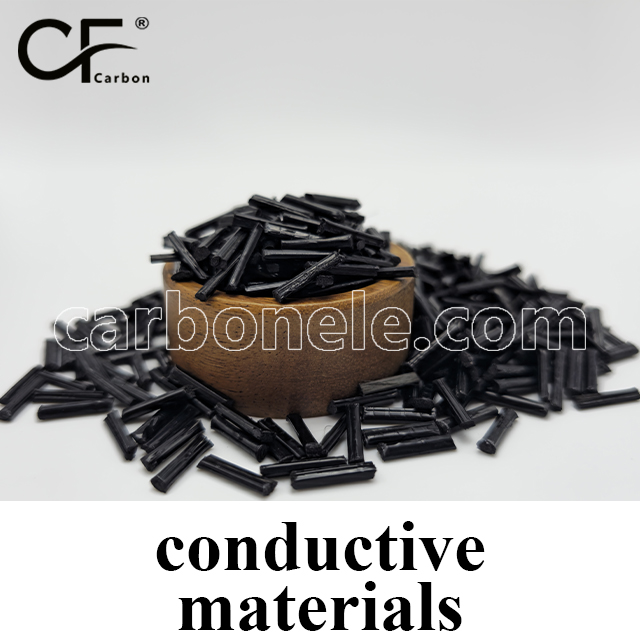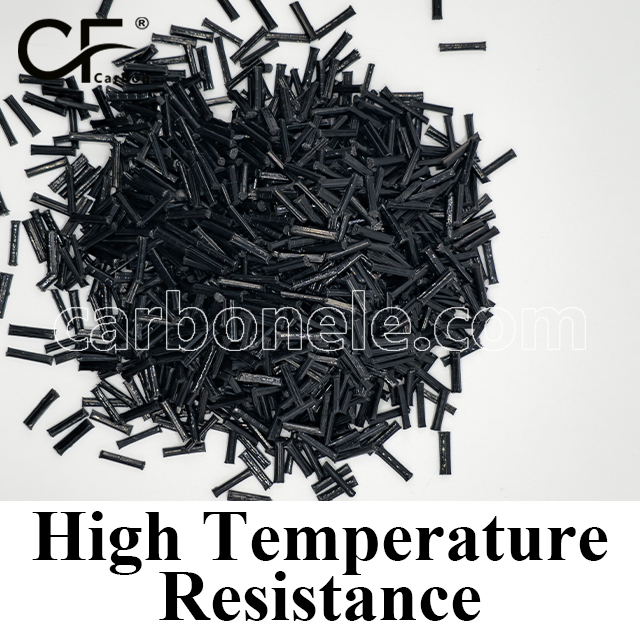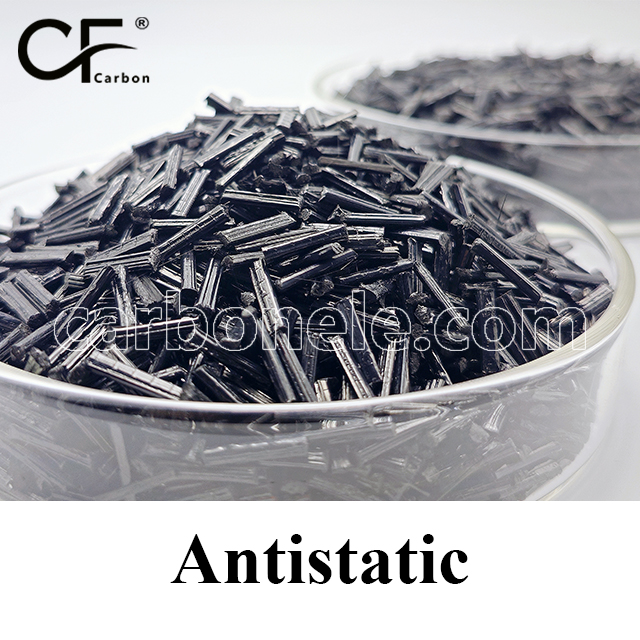PA66-LCF60 is an ultra high performance polyamide 66 reinforced with 60% long carbon fiber, offering metal-like strength, exceptional stiffness, and outstanding thermal resistance. Ideal for structural components in extreme environments, it delivers superior wear resistance, dimensional stability, and long-term mechanical reliability under high loads and temperatures.

Enhanced mechanical properties PA66-LCF60
- Model number: PA66-LCF-BCA6
- Matrix Resin: Nylon6 6(Polyamide66) (PA66)
- Reinforcing Filler: Carbon fiber
- Appearance: Granules
- Grade: Injection/extrusion grade
- Packaging: 25kgs/bag
PA66-LCF60: Ultra-High Reinforcement Long Carbon Fiber Polyamide 66 for Extreme Structural and Thermal Performance
PA66-LCF60 is an elite grade polyamide 66 (PA66) composite fortified with 60% long carbon fiber (LCF), engineered for applications requiring peak mechanical strength, rigidity, and thermal endurance. With its exceptionally high fiber content, PA66-LCF60 provides structural performance rivaling lightweight metals, while retaining the moldability, corrosion resistance, and weight saving advantages of thermoplastics.
The dense network of long carbon fibers dramatically enhances stiffness, tensile strength, and fatigue resistance—enabling reliable, long-life performance in the harshest mechanical and environmental conditions. PA66-LCF60 is tailored for critical load bearing components in automotive, industrial, and aerospace sectors where performance cannot be compromised.
Key Mechanical Properties
Tensile Strength: ≥ 190 MPa
Flexural Strength: ≥ 250 MPa
Notched Impact Strength: ≥ 15 kJ/m²
The 60% LCF reinforcement forms a rigid internal skeleton that maximizes load transfer, resists deformation, and ensures stability under bending, torsion, and shock loads. PA66-LCF60 delivers mechanical properties well beyond traditional engineering plastics—making it a top tier alternative to metal alloys for structural applications.
Thermal and Chemical Resistance
Heat Deflection Temperature (HDT): Approx. 155°C
Long-Term Service Temperature: Up to 145°C
Chemical Resistance: Excellent resistance to oils, greases, fuels, and dilute acids/alkalis; not recommended for strong acids or oxidizers
PA66-LCF60 excels in thermally aggressive environments, maintaining mechanical integrity under continuous heat exposure. This makes it ideal for engine bay parts, thermal enclosures, and industrial machines operating near heat sources.
Wear Resistance and Processability
Wear Resistance: Outstanding—ideal for sliding, rotating, or load cycling parts
Processing Methods: Injection molding (using LCF capable equipment), compression molding
Processing Notes: Low shear molding conditions and hardened tool steel are essential to retain fiber length and ensure uniform dispersion
Despite its high fiber content, PA66-LCF60 remains processable with appropriate equipment. Its long fiber structure provides exceptional wear resistance and reduced creep, extending service life even under harsh mechanical cycles.
Environmental Stability
Water Absorption: Significantly lower than unreinforced PA66
Dimensional Stability: Excellent in high humidity and thermal cycling environments
The densely packed LCF network minimizes moisture uptake and thermal distortion, allowing PA66-LCF60 to maintain critical tolerances and stability in demanding outdoor or fluctuating environments.
Typical Applications
PA66-LCF60 is ideal for ultra high performance structural components in sectors that demand strength, light weight, and precision:
Automotive:
Engine cradles, crossmembers, and subframe elements
High stress brackets and mountings
Plastic metal hybrid load structures
Industrial:
Structural machine frames and supports
Robotic joints, arms, and fatigue resistant mechanisms
Impact and vibration resistant enclosures
Electronics & Aerospace:
Heat resistant structural frames
High load casings for ruggedized equipment
Precision mechanical parts under thermal and vibrational stress
PA66-LCF60 Performance Summary
| Property | Value/Description |
|---|---|
| Carbon Fiber Content | 60% (Long Carbon Fiber) |
| Tensile Strength | ≥ 190 MPa |
| Flexural Strength | ≥ 250 MPa |
| Notched Impact Strength | ≥ 15 kJ/m² |
| Heat Deflection Temp. | Approx. 155°C |
| Long Term Service Temp. | Up to 145°C |
| Chemical Resistance | Excellent, except strong acids/oxidizers |
| Water Absorption | Very low – excellent dimensional control |
| Processing Methods | Injection molding, compression molding |
| Wear Resistance | Exceptional – best suited for high load friction |
If you want to get more information about PA66-LCF60, you can vist our Youtube.
Click here to contact us.
Strength between PA66 and PA66-CF
Compared to unreinforced PA66, PA66-CF (carbon fiber reinforced) offers significantly higher strength and stiffness. The addition of carbon fiber increases tensile and flexural strength, enhances dimensional stability, and reduces deformation under load. While standard PA66 provides good toughness and impact resistance, PA66-CF materials are better suited for structural and high-stress applications where superior mechanical performance is required.
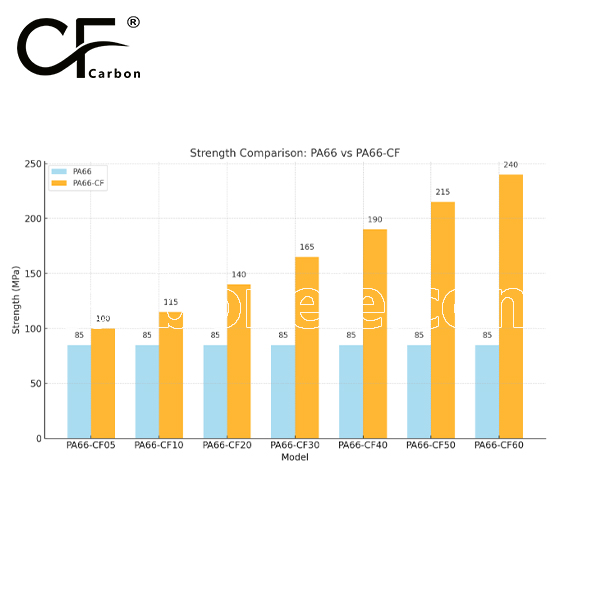
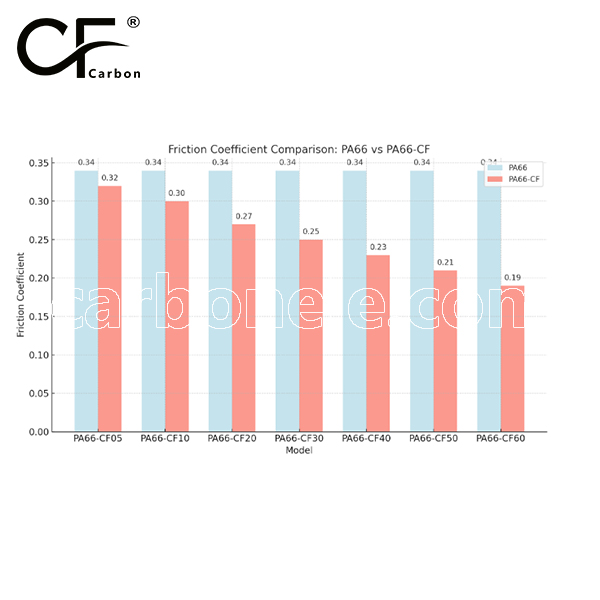

Frequently Asked Questions
Carbon (Xiamen) New Material Co., Ltd. aims to provide buyers with "one-stop" worry-free high-quality services. Here you can find all information about carbon fiber engineering plastics. If you still have questions, please send us an email for consultation!
-
How can I contact the manufacturer of a product that interests me?
When you find a product you are interested in, you can contact the manufacturer directly by sending an email and we will get back to you as soon as possible.
-
How do I find the products that interest me?
All you need to do is enter the keyword, product name in the search window and press the Enter key on your keyboard. Your search results page will then be displayed. You can also search within the product category pages on the home page. Each category is divided into subcategories, allowing you to refine your search and find products that interest you.
-
Where will I find a buying guide?
Please contact our after-sales service directly and we will provide you with a comprehensive operating guide.
-
What are CF Reinforced Thermoplastic Composites?
CF Reinforced Thermoplastic Composites are materials where carbon fibers are incorporated into a thermoplastic matrix. They combine the strength and stiffness of carbon fibers with the processability and recyclability of thermoplastics. For instance, they are used in automotive parts like bumper beams.
-
What are the benefits of CF Reinforced Thermoplastic Composites over traditional composites?
The key benefits include faster production cycles, easier recyclability, and better impact resistance. They also offer design flexibility. An example is in the manufacturing of consumer electronics casings where complex shapes can be achieved more easily.
-
How are CF Reinforced Thermoplastic Composites processed?
Common processing methods include injection molding, extrusion, and compression molding. Injection molding is widely used for mass production. For example, in the production of small components for the medical industry.
-
What industries use CF Reinforced Thermoplastic Composites?
They are utilized in aerospace, automotive, medical, and sports equipment industries. In aerospace, they can be found in interior components. In the medical field, they might be used in prosthetics.
-
How does the carbon fiber content affect the properties of the composites?
Higher carbon fiber content generally leads to increased strength and stiffness but may reduce ductility. A moderate content is often balanced for specific applications. For example, a higher content might be preferred in structural parts of a race car.
-
What are the challenges in using CF Reinforced Thermoplastic Composites?
Challenges include higher material costs, complex processing equipment requirements, and ensuring uniform fiber dispersion. Issues with adhesion between the fibers and the matrix can also arise. An example is in achieving consistent quality in large-scale production.









